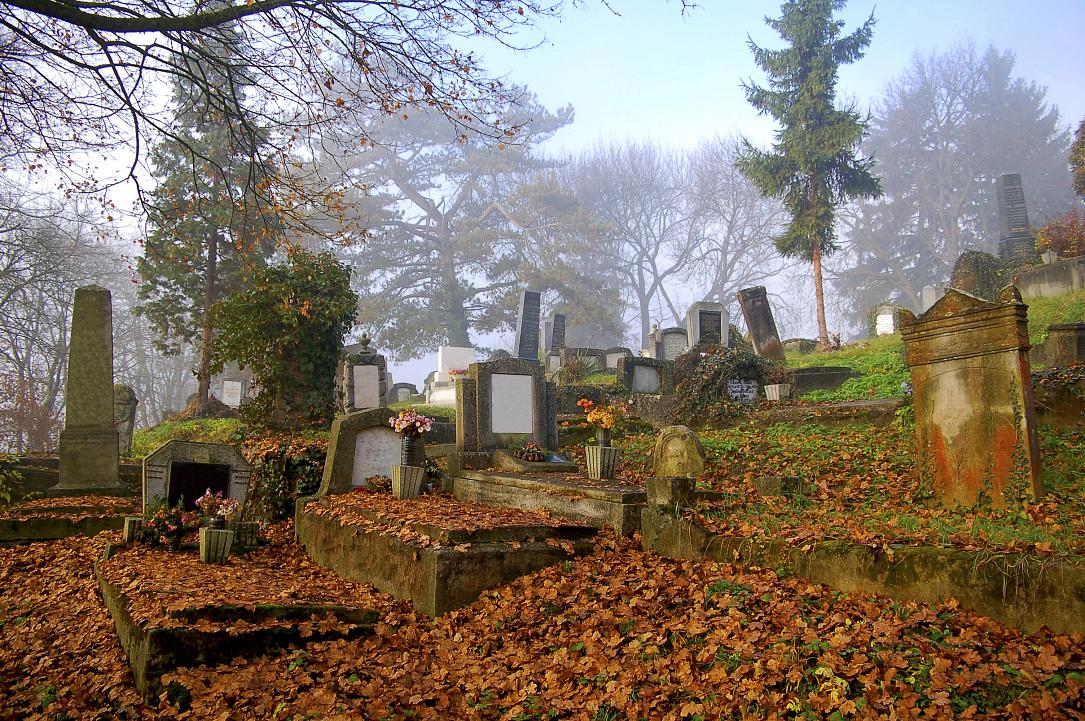Romania Photo of the Day by Dreamstime: Sighișoara's Cemetery of the Church on the Hill in autumn colors



One of the most beautiful places to visit in the medieval town of Sighișoara is the Evangelical Church known as the Church on the Hill and its adjacent Evangelical Cemetery, which together crown the highest point of the town's Fortress. (Photo source - click on the number to get to the photo 10474925 / Autumn © Draghicich | Dreamstime.com)
One can reach the church and cemetery by climbing all 176 steps of the Pupils’ Stairway – a covered wooden staircase dating back to 1642, or by following the road that comes up past the School on the Hill. The beauty and grandeur of the XIV-century Gotic church and cemetery are such, says transylvaniabeyond.com, that even climbing twice the number of stairs wouldn’t be great an effort.
This Evangelical church, dedicated to Saint Nicholas, was built in several stages, with construction works starting as early as 1345 and ending as late as 1525.
The stages of its construction correspond, roughly, to various architectural styles. Thus, between 1200 and 1250 the church was in its Romanesque stage; followed by the early Gothic stage between 1250 and 1300, when the west end tower was erected; next came the the period between 1300 and 1429, which saw the construction of the three nave basilica; and finally, between 1429 and 1483 the church was brought to the appearance that has been preserved to this day.
Most of the paintings inside the church were authored either by Valentinus Pictor (the ones in the choir and the triumphal archway) in 1483 or by Jakobus Kendlinger (the ones in the north-south lateral nave) in 1488.
Among the church’s signature features are its crypt – the only one enclosed in an Evangelical church in Transylvania, containing a total of about sixty tombs underneath the walls of the choir; its beautiful Romanesque chapel; its exterior stone sculptures, the remains of which illustrate a portion of the Adoration of the Wise Men, and are some of the very few Gothic stone sculptures left in Transylvania; and the fact that one of its paintings illustrates the Holy Trinity in the rare interpretation of a person with three faces.
From 1993 to 2001 a thorough and complete restoration was carried out, says yourguideintransylvania.com, financed by the Messerschmitt Foundation from Munich and the Romanian Ministry of Culture, which led it to become the winner of both the Europa Nostra Grand Prize and the EU Heritage Prize.
As for the cemetery, known to locals as the Saxon Cemetery, with its centuries-old tombstones, Gothic lettering, and guild symbols, it is one of the most beautiful cemeteries in the country and has been included on the UNESCO World Heritage list.
Surrounded by breathtaking scenery, the cemetery is a place to be alone with one’s thoughts, especially when the amber leaves of the trees growing amongst the graves catch the falling light of the sun setting on an autumn day.